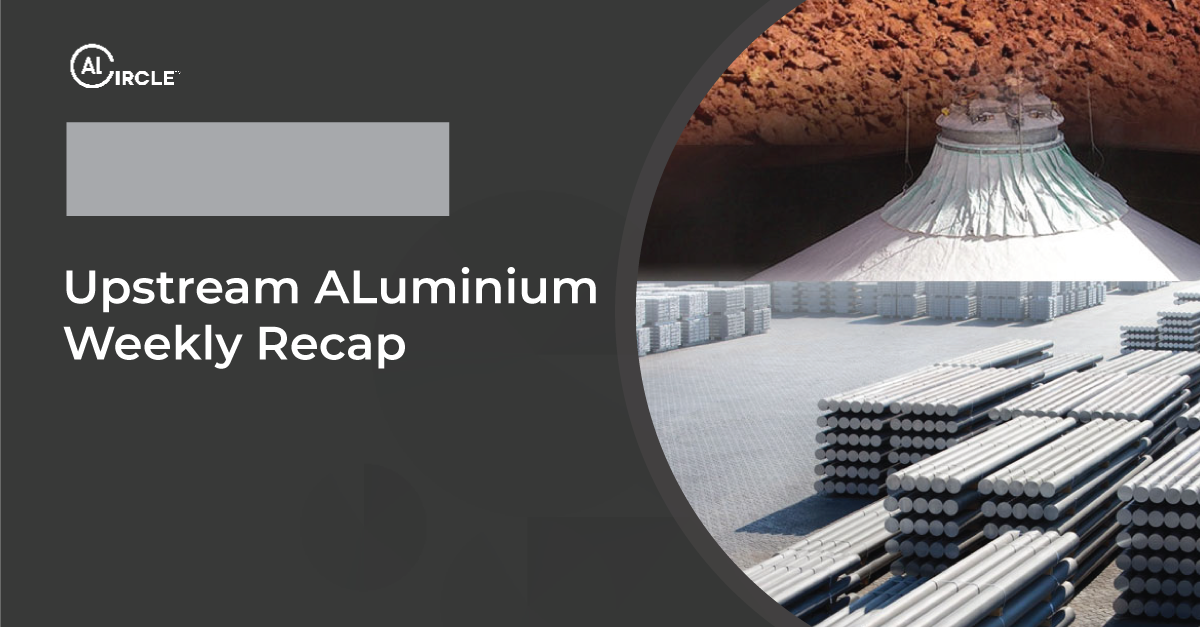The aluminium industry is currently navigating a landscape of sharp contrasts—marked by remarkable highs and surprising lows—making it one of the most intriguing sectors to watch. A series of significant developments has kept the momentum alive, each playing a distinct role in shaping the industry’s evolving story.

To begin with, two of Alcoa’s aluminium smelters (namely the Portland smelter in Australia and San Ciprián in Galicia) have highlighted how differing energy infrastructures can impact their performance and outlook. Alcoa’s Portland smelter is experiencing a period of stability and optimism – in contrast, the San Ciprián smelter faces significant operational challenges. To learn more about it, click here.
India has unlocked yet another record-breaking milestone in mineral production for the financial year 2024–25. This achievement has been largely driven by a surge in output from key industries and non-ferrous minerals. Click here to know more.
Aluminium futures have seen a significant rebound, rising to US$ 2,440 per tonne after hitting an eight-month low of US$ 2,340 on April 9th. This upward movement mirrors gains across other base metals, driven by easing fears of a US recession and renewed optimism in global manufacturing activity. However, despite the recent rebound, aluminium futures remain down by 5 per cent for the year – Why? Click here to get your answer.
There was widespread speculation that US aluminium imports would spike ahead of the 25 per cent tariff, which was implemented on March 12, as businesses rushed to bring in shipments before the duty was imposed. The scenario is quite different per US import data for January and February 2025. The figures confirmed that aluminium inflows into the US had dropped in February – Why? Read here.
China has led global aluminium production for several years, despite facing challenges such as an aluminium production cap aimed at controlling overcapacity and emissions, a phased 145 per cent tariff on Chinese aluminium products entering the US, and restrictions on bauxite imports from key suppliers. Nonetheless, these obstacles have not significantly hindered China’s ongoing trade expansion.
On April 2, 2025, Indonesia’s Energy and Mineral Resources Minister, Bahlil Lahadalia, addressed concerns surrounding state-owned mining company PT Aneka Tambang (Antam) and its inability to sell bauxite amid ongoing export restrictions. While Bahlil pledged to review the issue, he reaffirmed the government’s commitment to its domestic processing policy, supported by the Domestic Benchmark Pricing (HPM) system.
Egypt Aluminum, the country’s largest aluminium producer and one of the biggest in Africa, has reportedly released its financial results for the first nine months of the 2024–2025 fiscal year, ending March 31. During this period, the company recorded an impressive 89 per cent year-on-year surge in net profit after tax, reaching EGP 9.894 billion (US$194.91 million), up from EGP 5.227 billion (US$102.97 million) in the same period last year.
Century Aluminum Company, with a strong market capitalisation of USD 1.47 billion, has released its Q1 2025 earnings, revealing a notable shortfall in earnings per share (EPS). Reported EPS dropped to US$ 0.29, down from USD 0.44 in the same period last year, while adjusted EPS came in at US$ 0.36, well below the projected USD 0.61. To know more, click here.
Other significant news
Zeotech, an emerging mineral processing technology company based in Australia, has reportedly entered into an offtake agreement with Jiangsu Mineral Sources International (MSI), a China-based global trading company, for the direct shipment of ore products including bauxite clay, pink cosmetic-grade kaolin, and low-iron kaolin.
Press Metal Aluminium Holdings Berhad expects the ongoing alleviation of the tight alumina supply this year, fueled by increased global production. Group CEO Tan Sri Koon Poh Keong anticipates that new refinery capacity expansions in Indonesia, India, and China will substantially enhance alumina output worldwide.
Impact Minerals Limited (ASX: IPT) has entered the final quarter of FY 2025 with Lake Hope solidified as its flagship high-purity alumina (HPA) asset. The inaugural Mineral Resource Estimate of 2.78 million tonnes at 25.1 per cent Al₂O₃ not only validates the scale and grade of the deposit but also supports the company’s vision of a “multi-decade HPA operation” in one of Western Australia’s most geologically secure regions.
Researchers at the Max Planck Institute for Sustainable Materials (MPI-SusMat) in Germany have developed a groundbreaking innovation that addresses the issue of aluminium embrittlement, which causes cracking and failure when exposed to hydrogen.














